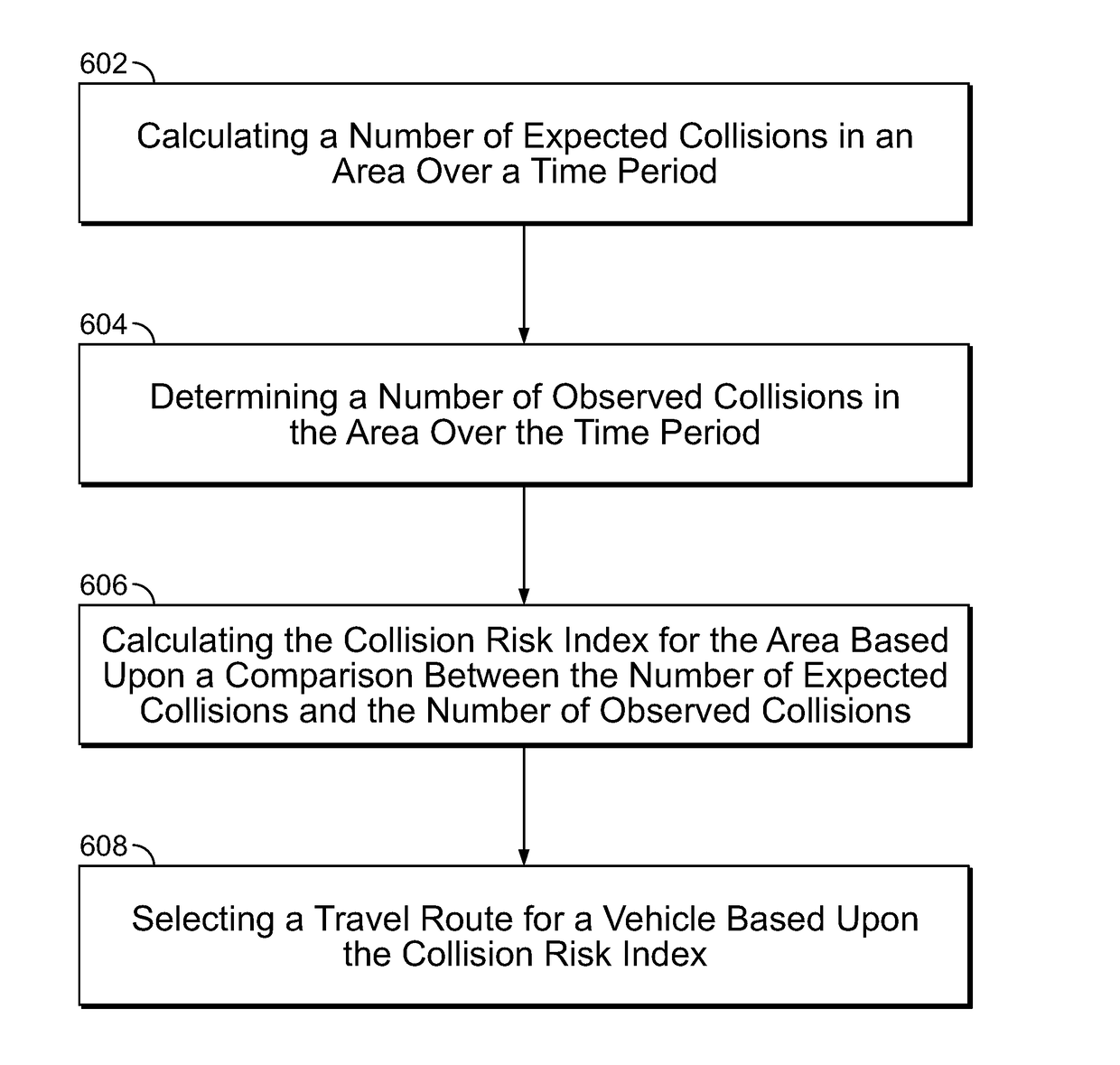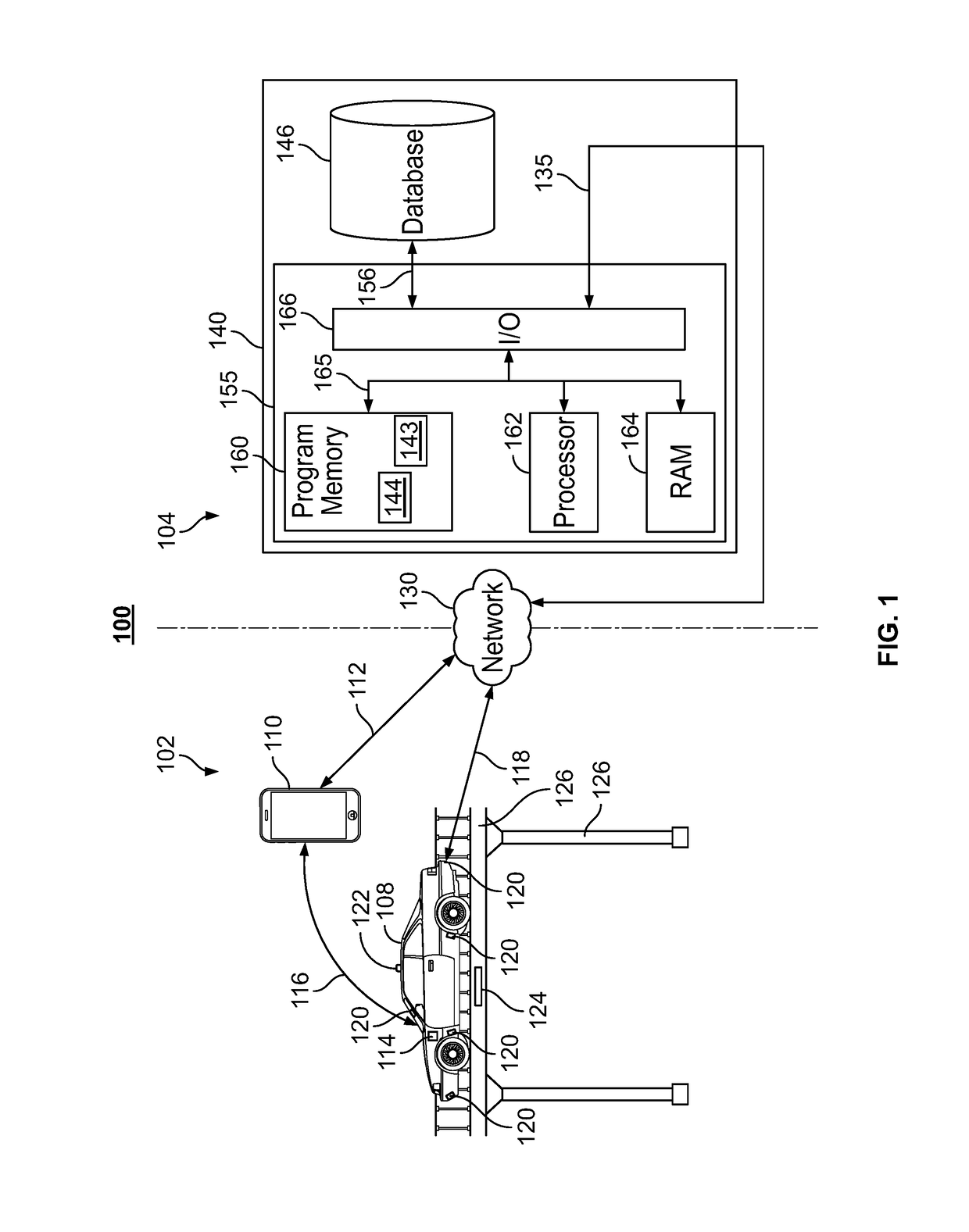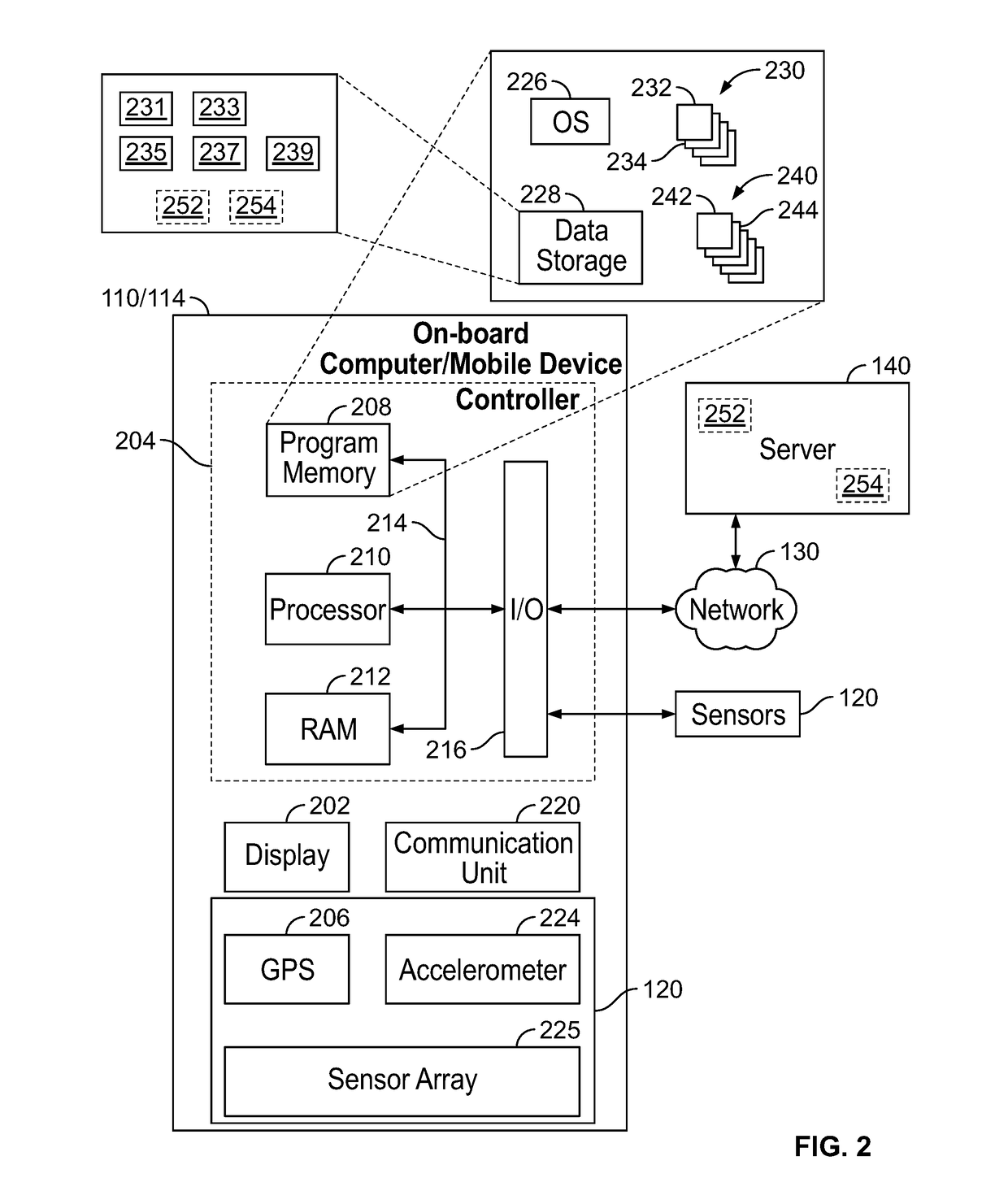Traffic Risk Avoidance for a Route Selection System
a route selection and traffic risk technology, applied in surveying, navigation, navigation instruments, etc., can solve the problems of hazardous areas or routes, prone to induce vehicle collisions, and other transportation infrastructure, and achieve the effect of avoiding the traversing area and facilitating routing or re-routing
- Summary
- Abstract
- Description
- Claims
- Application Information
AI Technical Summary
Benefits of technology
Problems solved by technology
Method used
Image
Examples
Embodiment Construction
[0031]The present embodiments may generally relate to reducing vehicle collisions, and particularly, inter alia, to identifying or selecting a travel route for a vehicle that avoids traversing the areas that are prone to vehicle collisions.
[0032]Hazardous areas (e.g., high risk intersections, road segments or portions of certain roads, bridges, abnormal traffic patterns, exit ramps, circular traffic flows, road construction areas, parking lots, and other transportation infrastructure) are prone to induce, or be associated with, vehicle collisions. One way to measure how hazardous an area is by calculating a risk index for the area, which quantifies how prone the area is to vehicle collisions. Calculating the risk index may include various methods and / or factors, including those discussed elsewhere herein. Subsequent to calculating the risk index, a travel route for a vehicle may selected based upon the aggregate risk index.
[0033]FIG. 1 illustrates a block diagram of an interconnecte...
PUM
 Login to View More
Login to View More Abstract
Description
Claims
Application Information
 Login to View More
Login to View More - R&D
- Intellectual Property
- Life Sciences
- Materials
- Tech Scout
- Unparalleled Data Quality
- Higher Quality Content
- 60% Fewer Hallucinations
Browse by: Latest US Patents, China's latest patents, Technical Efficacy Thesaurus, Application Domain, Technology Topic, Popular Technical Reports.
© 2025 PatSnap. All rights reserved.Legal|Privacy policy|Modern Slavery Act Transparency Statement|Sitemap|About US| Contact US: help@patsnap.com



